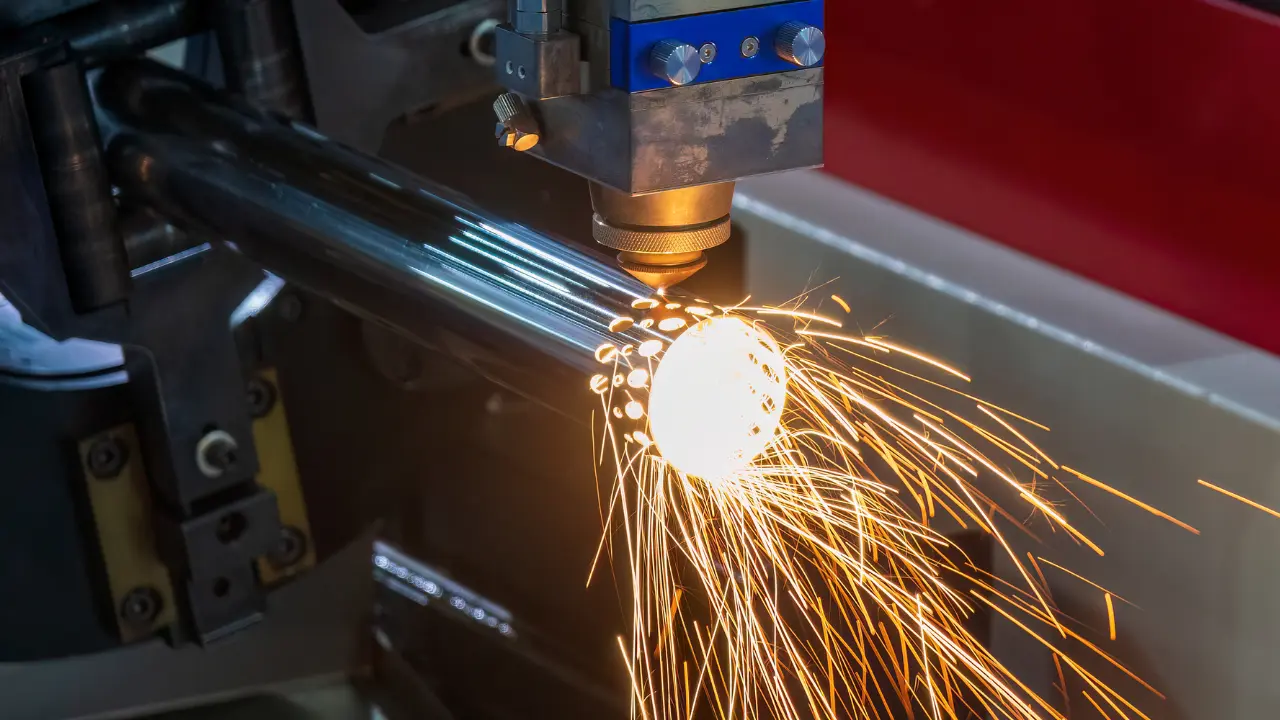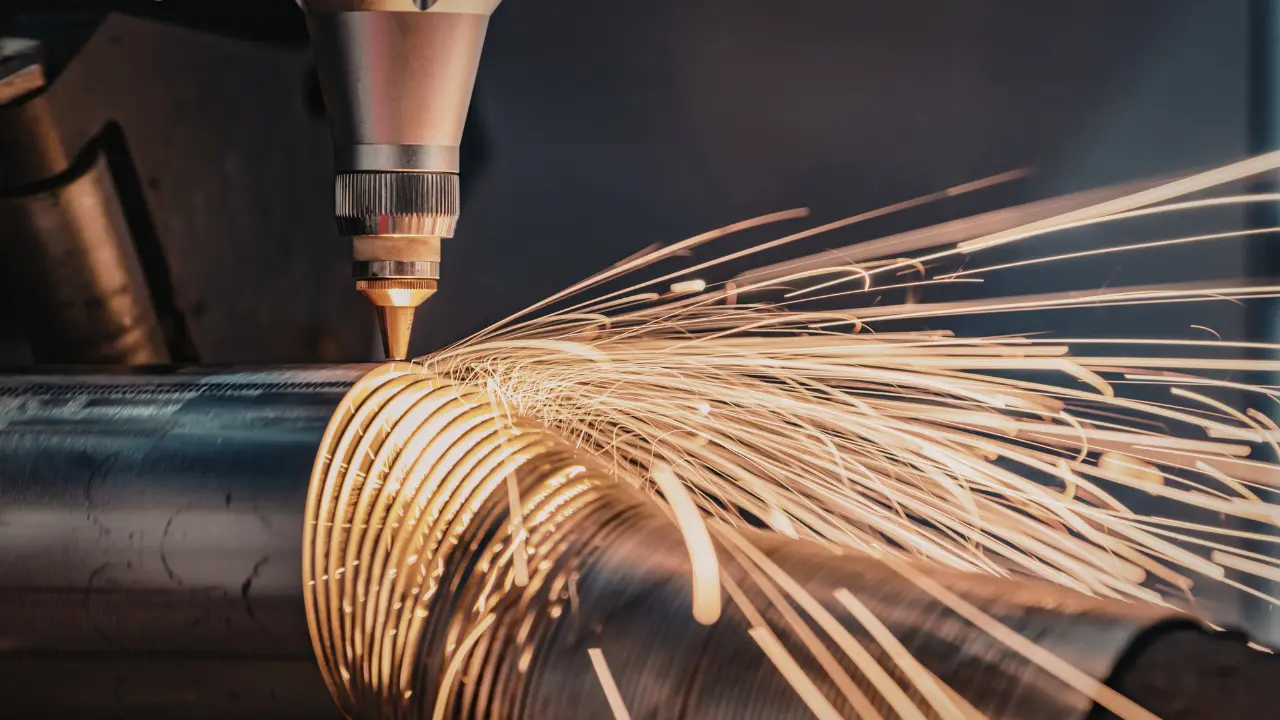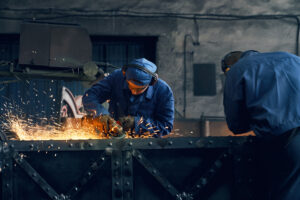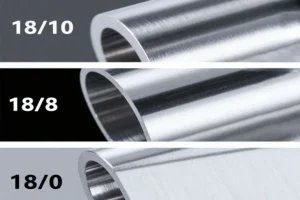The manufacturing world demands exactness. From medical devices to aerospace components, the need for perfectly cut and shaped materials is more critical than ever. One of the most significant advancements in achieving this level of accuracy is the use of laser technology, particularly for cutting tubes. This process, known as precision tube cutting, has transformed how industries approach complex fabrication tasks, offering unparalleled accuracy and efficiency.
This guide will walk you through everything you need to know about this innovative technology. We will explore what a laser tube cutter is, how it operates, and the distinct advantages it offers over traditional cutting methods. You will also learn about the various industries that rely on this technology and the different types of tools that make it possible. By the end, you will have a clear understanding of why laser-based cutting is the gold standard for producing high-quality, intricate tube components.
What is Laser Tube Cutting?
Laser tube cutting is a thermal cutting process that uses a focused, high-powered laser beam to cut materials. A computer numerical control (CNC) system guides the laser, allowing it to create complex shapes, patterns, and holes in tubes and profiles with exceptional accuracy. The laser beam melts, burns, or vaporizes the material in a highly localized area, while a jet of gas blows the molten material away, leaving a clean, smooth edge.
Unlike traditional methods like sawing, drilling, or punching, laser tube cutting is a non-contact process. This means there is no physical tool wear, and the material being cut is not subjected to mechanical stress. This attribute is particularly important when working with delicate or thin-walled tubes, as it prevents deformation and damage. The result is a finished product that requires minimal, if any, post-processing. A modern precision tube laser system can handle a wide variety of materials, including steel, stainless steel, aluminum, brass, and copper, making it a versatile solution for countless applications.
How Does a Laser Tube Cutter Work?
The operation of a laser tube cutter is a sophisticated blend of optics, mechanics, and computer science. The process can be broken down into a few key stages, each contributing to the final precise cut.

1. The Laser Source
The heart of the machine is the laser source, which generates the high-energy light beam. The two most common types used in industrial applications are CO2 lasers and fiber lasers.
- CO2 Lasers: These lasers use a gas mixture (primarily carbon dioxide, nitrogen, and helium) that is excited by electricity to produce a laser beam. CO2 lasers are versatile and have been a workhorse in the industry for decades, effective for cutting a wide range of materials, including thicker metals and non-metals.
- Fiber Lasers: A more recent innovation, fiber lasers generate the beam within an optical fiber doped with rare-earth elements like ytterbium. The light is then amplified and guided through another fiber cable to the cutting head. Fiber lasers are known for their high efficiency, low maintenance requirements, and superior performance when cutting reflective materials like aluminum and brass. They have become the preferred choice for many modern precision tube cutting applications.
2. Beam Delivery System
Once generated, the laser beam travels from the source to the cutting head through a series of mirrors and lenses (in CO2 systems) or a flexible fiber optic cable (in fiber laser systems). The beam delivery system is designed to maintain the quality and power of the laser until it reaches its target.
3. The Cutting Head
The cutting head is where the action happens. It contains a focusing lens that concentrates the laser beam into a tiny, powerful spot, typically less than a millimeter in diameter. This high energy density is what allows the laser to cut through metal. The head also includes a nozzle that directs a stream of assist gas—such as oxygen, nitrogen, or compressed air—coaxially with the laser beam. The type of gas used depends on the material being cut and the desired edge quality.
4. CNC Control and Material Handling
The entire process is automated and controlled by a CNC system. A design file, usually created in CAD software, is loaded into the machine’s computer. The CNC then translates this design into a set of precise instructions for the machine’s motors. It controls the movement of the cutting head in multiple axes, as well as the rotation of the tube itself.
Advanced automated loading and unloading systems feed the raw tube stock into the machine and remove the finished parts. This automation allows for continuous, unattended operation, significantly boosting productivity. The machine can perform various operations in a single setup, including straight cuts, miters, holes, slots, and complex contours, all with incredible precision.
Key Benefits of Tube Cutting with Lasers

The shift towards laser technology is driven by a host of significant advantages over conventional methods. These benefits impact everything from product quality and design freedom to operational costs and production speed.
Unmatched Precision and Quality
The primary advantage is accuracy. A precision tube laser can achieve tolerances as tight as a few thousandths of an inch, ensuring that every part is identical to the design specifications. The laser creates a very narrow kerf (the width of the material removed by the cutting process), resulting in clean, burr-free edges that often require no secondary finishing.
Design Flexibility and Complexity
Laser cutters are not limited by the physical constraints of traditional tools. They can cut intricate patterns, complex geometries, and features that would be difficult or impossible to create with saws or drills. This capability opens up new possibilities for product design, allowing engineers to create lighter, stronger, and more functional parts.
High-Speed Production
For many applications, laser tube cutting is significantly faster than traditional methods. The ability to perform multiple operations (cutting, drilling, slotting) in one continuous process eliminates the need to move parts between different machines, drastically reducing cycle times and increasing throughput.
Reduced Material Waste
The narrow kerf of the laser minimizes the amount of material that is wasted during cutting. Furthermore, advanced nesting software can optimize the placement of parts on a length of tube to maximize material yield. This efficiency translates directly into cost savings, especially when working with expensive materials.
No Tool Wear
Since the cutting process is non-contact, there are no blades, drills, or punches to wear out and replace. This eliminates the costs associated with tool maintenance and replacement, as well as the downtime required to change tools. The result is more consistent cutting quality over time.
Automation and Reduced Labor Costs
Modern laser cutting systems are highly automated, from loading raw material to unloading finished parts. This allows a single operator to oversee multiple machines, reducing labor costs and freeing up skilled workers for more value-added tasks.
Types of Precision Tools in Laser Cutting

While the laser tube cutter itself is the primary tool, its effectiveness relies on an ecosystem of supporting technologies and software. These components are integral to achieving high-quality results.
- CAD/CAM Software: Computer-Aided Design (CAD) software is used to create the 2D or 3D models of the parts to be cut. Computer-Aided Manufacturing (CAM) software then takes these designs and generates the G-code that instructs the CNC machine on how to execute the cuts. Advanced CAM software for tube cutting includes features for optimizing tool paths and nesting parts to maximize material usage.
- CNC Controllers: The CNC controller is the brain of the machine. It reads the G-code and precisely controls the motion of all the machine’s axes, the laser power, and the assist gas flow. Modern controllers are highly sophisticated, offering real-time monitoring and adjustments to ensure cut quality.
- Assist Gas Systems: The system for delivering assist gas is a critical component. It includes regulators, valves, and nozzles that control the pressure and flow of the gas. The choice between oxygen (for exothermic cutting of mild steel), nitrogen (for an inert, high-quality cut on stainless steel and aluminum), or compressed air affects the cutting speed and edge finish.
- Automated Loading/Unloading Systems: For high-volume production, automated material handling is one of the essential types of precision tools. These systems can consist of bundle loaders that hold a large quantity of raw tubes and feed them into the machine one by one, and unloading systems that sort and stack the finished parts.
Industries That Rely on Precision Tube Cutting

The versatility and benefits of laser tube cutting have made it an indispensable process across a wide array of industries.
- Automotive: In the automotive sector, lasers are used to cut parts for exhaust systems, chassis components, and hydroformed parts. The precision and speed of laser cutting are essential for meeting the high-volume, tight-tolerance demands of the industry.
- Aerospace: The aerospace industry requires parts that are both lightweight and incredibly strong. Laser cutting is used to produce components for aircraft frames, engine parts, and hydraulic systems from high-strength alloys.
- Medical Devices: The medical field relies on precision tube cutting for manufacturing a variety of devices, including stents, surgical instruments, and orthopedic implants. The ability to create tiny, intricate features with a smooth, clean finish is paramount for these applications.
- Furniture and Architecture: Designers of modern furniture and architectural elements use laser-cut tubes to create unique and aesthetically pleasing structures. The technology allows for creative freedom and the production of complex joints and decorative patterns.
- Fitness Equipment: The manufacturing of fitness equipment, from weight machines to treadmills, involves a great deal of tube fabrication. Laser cutting streamlines the production of frames and components, ensuring a perfect fit and finish.
- General Manufacturing: Countless other industries, from electronics to agriculture, utilize laser-cut tubes for everything from machine frames to specialized components, underscoring the broad applicability of this technology.
Your Path to Enhanced Manufacturing
The adoption of a laser tube cutter represents a significant leap forward in manufacturing capabilities. By offering a combination of speed, accuracy, and design flexibility, this technology empowers businesses to produce higher-quality products more efficiently and cost-effectively. The numerous benefits of tube cutting with lasers—from reduced waste and minimal post-processing to complete automation—make a compelling case for its integration into modern production workflows.
As industries continue to push the boundaries of design and engineering, the demand for advanced fabrication methods will only grow. Precision tools like laser cutters are no longer a niche technology but a fundamental component of competitive manufacturing. By understanding and leveraging the power of laser cutting, your organization can unlock new levels of innovation and secure a leading edge in the marketplace.






